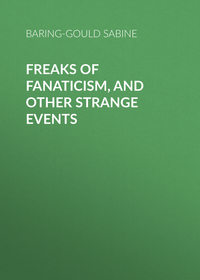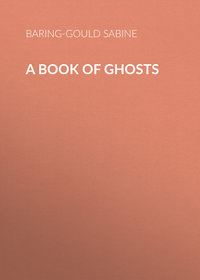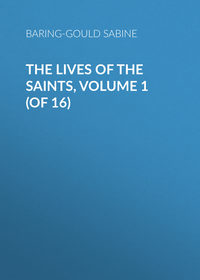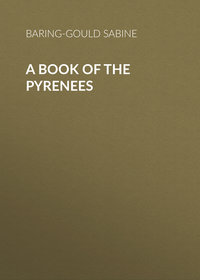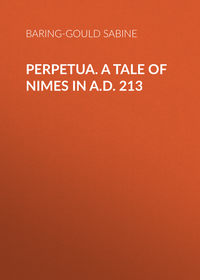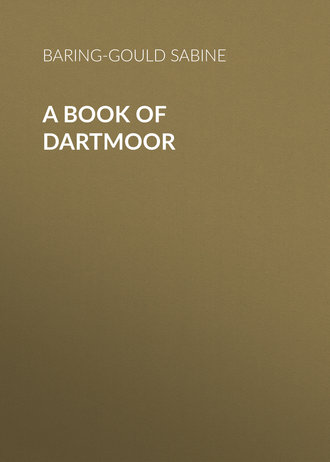 полная версия
полная версияA Book of Dartmoor
If we desire to understand what their peculiar views were, what were the dominant ideas which directed their conduct, and which led them to erect the monuments which are marvels to us, even at the present day, we must go to China.
Let us look for a moment into China at the present day. At first sight, the Chinese strike us as being not only geographically our antipodes, but as being our opposites in every particular – mental, moral, social; in language as in ideas.
The Chinese language is without an alphabet and without a grammar. It is made up of monosyllables that acquire their significance by the position in which they are placed in a sentence. In customs the Chinese differ from us as much. In mourning they wear white; a Chinese dinner begins with the dessert and ends with the soup; a scholar, to recite his lessons, turns his back on the teacher. But it is chiefly in the way in which the living and the dead are regarded as forming an indissoluble commonwealth, that the difference of ideas is most pronounced. Regard for the dead is the first obligation to a Chinese. A man of the people who is ennobled, ennobles, not his descendants, but his ancestry. The duty of the eldest son of the family is to maintain the worship of the ancestors. Denial of a sepulchre is the most awful punishment that can be inflicted; a Chinese will cheerfully commit suicide to gain a suitable tomb and cult after death. The most sacred spot on earth is the mausoleum, and that is perpetually inviolable. Consequently, if this principle could be carried out to the letter, the earth would be transformed into one vast necropolis, from the occupation of which the living would be in time entirely excluded. It is this respect for graves which stands in the way of the execution of works of public utility, such as canals and railroads; and it is the imperious obligation of maintaining the worship of ancestors that blocks conversion to Christianity. It is resentment against lack of respect shown to the dead, neglect of duty to the dead, which has provoked the massacres of Christians. A Chinese, under certain circumstances, is justified in strangling his father, but not in omitting to worship him after he has throttled him.
On the great Thibet plateau, geographically contiguous to the Chinese, and under the Empire of China, the Mongol nomads are so absolutely devoid of a grain of respect for their dead, that, without the smallest scruple, they leave the corpses of their parents and children on the face of the desert, to be devoured by dogs and preyed on by vultures.
If we look at the Nile valley we see that the ancient Egyptians were dominated by the same ideas as the Chinese. To them the tomb was the habitation par excellence of the family. Of the dwelling-houses of the old Egyptians the remains are comparatively mean, but their mausoleums are palatial. The house for the living was but as a tent, to be removed; but the mansion of the dead was a dwelling-place for ever.
Not only so, but just as the ancient Egyptian supposed that the Ka, the soul, or one of the souls of the deceased, occupied the monument, tablet, or obelisk set up in memorial of the dead, so does the Chinese now hold that a soul, or emanation from the dead, enters into and dwells in the memorial set up, apart from the tomb, to his honour.
Now if we desire to discover what was the distinguishing motive in life of the long-headed Neolithic man, we shall find it in his respect for the dead; and he has stamped his mark everywhere where he has been by the stupendous tombs he has erected, at vast labour, out of unwrought stones. He cannot be better described than as the dolmen-builder; that is to say, the man who erected the family or tribal ossuaries that remain in such numbers wherever he has planted his foot.
In China, it is true, there are no dolmens, but for this there is a reason. Before the descendants of the Hundred Families who entered the Celestial Empire had reached and obtained possession of mountains whence stone could be quarried, many centuries elapsed, and forced the Chinese to make shift with other material than stone, and so formed their habit of entombment without stone; but the frame of mind which, in a rocky land, would have prompted them to set up dolmens remained unchanged, and so remains to the present day.
The exploration of dolmens in Europe reveals that they were family or tribal burial-places, and were used for a long continuance of time. The dead to be laid in them were occasionally brought from a distance, as the bones show indication of having been cleaned of the flesh with flint scrapers, and to have been rearranged in an irregular and unscientific manner, a left leg being sometimes applied to a right thigh; or it may be that on the anniversary of an interment the bones of the deceased were taken out, scraped and cleaned, and then replaced.
In Algeria, and on the edge of the Sahara, are found great trilithons, that is to say, two huge upright stones, with one laid across at the top, forming doorways leading to nothing, but similar to those which are found at Stonehenge.
What was this significance?
We turn to the Chinese for an explanation, and find that to this day they erect triumphal gates – not now of stone, but of wood – in memory of and in honour of such widows as commit suicide so as to join their dear departed husbands in the world of spirits. On the other hand, our widows forget us and remarry.
The dolmen-builders were people with flocks and herds, and who cultivated grain and spun yarn. Their characteristic implement is the so-called celt, in reality an axe, sometimes perforated for the reception of a handle, most commonly not. The perforation belongs to the latest stage of Neolithic civilisation. Their weapons, or tools, were first ground. In about a score of places in France polishing rocks exist, marked with the furrows made by the axe when worked to and fro upon them, and others that are smaller have been removed to museums. At Stoney-Kirk, in Wigtownshire, a grinding-stone of red sandstone, considerably hollowed by use, was found with a small, unfinished axe of Silurian schist lying upon it. In the recent exploration of hut circles at Legis Tor a grindstone was found in one of the habitations, and on it an incomplete tool that was abandoned there before it was finished.
After grinding, these implements underwent laborious polishing by friction with the hand or with leather.
At the same time that these artificially smoothed tools were fabricated, flint was used, beautifully chipped and flaked, to form arrow and spear heads and swords. The arrow-heads are either leaf-shaped or tanged.
The pottery of the dolmen-builders is very rude. It is made of clay mingled with coarse fragments of stone or shell, is very thick and badly tempered; it is hand-made, and seems hardly capable of enduring exposure to a brisk fire. The vessels have usually broad mouths, with an overhanging rim like a turned-back glove-cuff, and below this the vessel rapidly slopes away. The ornamentation is constant everywhere. It consisted of zigzags, chevrons, depressions made by twisted cord, and finger-nail marks in rings round the bowls or rims. It was not till late in the Bronze Age that circles and spirals were adopted.
Celtic ornamentation is altogether different.
Whilst the long-headed dolmen-builder crept along the coast of Europe, there was growing up among the mountains and lakes of Central Europe a hardy round-headed race – the Aryan, destined to be his master. Was it through instinct of what was to be, that the Ivernian shrank from penetrating into the heart of the Continent, and clung to the seaboard?
When the dolmen-builder arrived in Britain, to the best of our knowledge, he found no one there. On the Continent, on the other hand, if he went far inland, he not only clashed with the Aryan round-heads, but also here and there stumbled on the lingering remains of the primeval Palæolithic people, who have left their remains in England in the river-drift, and in Devon in the Brixham caves and Kent's Hole.
The dolmen-builder has persisted in asserting himself. Though cranial modifications have taken place, the dusky skin, and the dark eyes and hair and somewhat squat build, have remained in the Western Isles, in Western Ireland, in Wales, and in Cornwall. It is still represented in Brittany. It is predominant in South-Western France, and is typical in Portugal.
After a lapse of time, of what duration we know not, a great wave of Aryans poured from the mountains of Central Europe, and, traversing Britain, occupied Ireland. This was the Gael. This people subjugated the Ivernian inhabitants, and rapidly mixed with them, imposing on them their tongue, except in South Wales, where the Silurian was found to have retained his individuality when conquered by Agricola in A.D. 78. But if the Gaelic invaders subjugated the Ivernians, they were in turn conquered by them, though in a different manner. The strongly marked religious ideas of the long-headed men, and their deeply rooted habit of worship of ancestors, impressed and captured the imagination of their masters, and as the races became fused, the mixed race continued to build dolmens and erect other megalithic monuments once characteristic of the long-heads, often on a larger scale than before. Stonehenge and Avebury were erections of the Bronze Period, and late in it, and of the composite people.
If we look at the physique of the two races, we find a great difference between them. The Ivernian was short in stature, with a face mild in expression, oval, without high cheek-bones, and without strongly characterised supraciliary ridges. The women were all conspicuously smaller than the men, and of markedly inferior development. The conquering race was other. The lower jaw was massive and square at the chin, the molar bones prominent, and the brows heavy. The head was remarkably short, and the face expressed vigour, was coarse, and the aspect threatening. Moreover, the women were as fully developed as the men, so much so that where all the bones are not present it is not always easy to distinguish the sex of a skeleton of this race. What Tacitus says of the German women – that they are almost equal to the men both in strength and in size – applies also to these round-headed invaders of Britain; and, indeed, what we are assured of the Britons in the time of Boadicea, that it was solitum feminarum ductu bellare, shows us that the same masculine character belonged to the women of British origin. The average difference in civilised races in the stature of men and women at present is about four inches, but twice this difference is very usually found to exist between the male and female skeletons of the Polished Stone Period in the long barrows. The difference is even more strikingly shown by a comparison of the male and female collar-bones; and we are able to reproduce from them in picture the Neolithic woman of the Ivernian race, with narrow chest and drooping shoulders, utterly unlike the muscular and vigorous Gaelic women who were true consorts to their men when they came over to conquer the island of Britain.
After a lapse of time the long-head began to reassert itself, and the infusion of its blood into the veins of the dominant race led to great modification of its harshness of feature. When iron was introduced into Britain, whether by peaceable means or whether by the second Aryan invasion, that of the Cymri or Britons, we do not know, but when Cæsar landed in Britain, B.C. 55, he found that iron was in general use.
The second Aryan invasion alluded to was that of the true Britons. They also came from the Alps, where they had lived on platforms constructed on the lakes. They occupied the whole of Britain proper, but not Scotland, and made but attempts to effect a landing in Ireland.
They were entirely out of sympathy with the original race and its ideas, and did not assimilate their religion and adopt their practices as had the Gaels.
The distinction between the two branches of the great Celtic family is mainly linguistic. Where the British employed the letter p, the Gael used the hard c, pronounced like k. For instance, Pen, a head, in British, is Cen in Gaelic; and we can roughly tell where the population was British by noticing the place names, such as those beginning with Pen. When these were Gaels, the same headlands would begin with Cen.
"By Tre, Pol, and PenYou know the names of Cornishmen,"and this at once decides that the inhabitants of the western peninsula were not Gaels.
From the lakes of Switzerland the Britons had brought with them their great aptitude for wattle-work. They built their houses and halls, not of stone, but of woven withies. Cæsar says that they were wont to erect enormous basket-work figures, fill them with human victims, and burn the whole as sacrifices to their gods. It is a curious coincidence that on some of the old Celtic crosses are found carved imitations of men made of wicker-work. These represent saints made of the same material and in the same manner by the same people, after they had embraced Christianity and abandoned human sacrifices.6
Let us try to imagine what was the mode of life of those people who raised their monuments on Dartmoor. They were pastoral, but they also certainly had some knowledge of tillage. In certain lights, hillsides on the moor show indications of having been cultivated in ridges, and this not with the plough, but with the spade. We cannot say that these belong to the early population, but as they are found near their settlements it is possible that they may be traces of original cultivation. But we know from the remains of grain found in the habitations and tombs of the same people in limestone districts that they were acquainted with cereals, and their grindstones have been found on Dartmoor in their huts.
Still, grain was not the main element of their diet; they lived chiefly on milk and flesh. In the huts have been found broad vessels that were covered with round discs of slate, and it is probable that these were receptacles for milk or butter, but the milk would mainly be contained in wooden or leathern vessels. Elsewhere their spindle-whorls have been found in fair abundance; not so on Dartmoor – as yet only two have been recovered. This shows that little spinning was done, and no weights such as are used by weavers have been found. The early occupants were in the main clothed in skins.
Their huts were circular, of stone, with very frequently a shelter wall, opposed to the prevailing south-west wind, screening the door, which opened invariably to the south or south-west. The whole was roofed over by poles planted on the walls, brought together in the middle, and thatched over with rushes or heather. The walls were rarely above four feet six inches high. They are lined within with large stones, set up on end, their smooth surfaces inwards, and the stone walls were backed up with turf without, making of the huts green mounds. This gave occasion to the fairy legends of the Celts, who represented the earlier population as living in mounds, which the Irish called sidi, and the people occupying them the Tuatha da Danann. As already said, this same name meets us in Damnonii, the oldest appellation for the people of Devon. They were a sociable people, clustering together for mutual protection in pounds.
These pounds are large circular inclosures, the walls probably only about four feet high, but above this was a breastwork of turf or palisading. Outside the pound were huts, perhaps of guards keeping watch.
Many of the huts have paddocks connected with them, as though these latter had been kail gardens, but some of these paddocks are large enough to have been tilled for corn. Their plough, if they used one, was no more than a crooked beam, drawn by oxen. It is possible that the numerous sharp flakes of flint that are found were employed fastened into a sort of harrow, as teeth. Their cooking was done either in pots sunk in the soil, or in holes lined with stones.
Rounded pebbles, water-worn, were amassed, and baked hot in the fire, then rolled to the "cooking-hole," in which was the meat, and layers of hot stones and meat alternated, till the hollow receptacle was full, and the whole was then covered with sods till the flesh was cooked.
The following account of the manner in which the Fiana, the Irish militia, did their cooking in pre-Christian times will illustrate this custom: —
"When they had success in hunting, it was their custom in the forenoon to send their huntsman, with what they had killed, to a proper place, where there was plenty of wood and water; there they kindled great fires, into which, their way was, to throw a number of stones, where they continued till they were red hot; then they applied themselves to dig two great pits in the earth, into one of which, upon the bottom, they were wont to lay some of these hot stones as a pavement, upon them they would place the raw flesh, bound up hard in green sedge or bulrushes; over these bundles was fixed another layer of hot stones, then a quantity of flesh, and this method was observed till the pit was full. In this manner their flesh was sodden or stewed till it was fit to eat, and then they uncovered it; and, when the hole was emptied, they began their meal."7
Some of the huts are very large, and in these no traces of fires and no cooking-holes have been found. Adjoining them, however, are smaller huts that are so full of charcoal and peat ash and fragments of pottery that no doubt can be entertained that these were the kitchens, and the large huts were summer habitations.
Occasionally a small hut has been found with a large hole in the centre crammed with ashes and round stones, the hole out of all proportion to the size of the hut if considered as a habitation. No reasonable doubt can be entertained that these were bath huts. The Lapps still employ the sweating-houses. They pour water over hot stones, and the steam makes them perspire profusely, whereupon they shampoo themselves or rub each other down with birch twigs.
Indeed, men wearing skin dresses are obliged to go through some such a process to keep their pores in healthy action.
It is very probable that the long tracklines that extend over hill and vale on Dartmoor indicate tribal boundaries, limits beyond which the cattle of one clan might not feed. Some of these lines, certainly of the age of the Neolithic men of the hut circles, may be traced for miles. There is one that starts apparently from the Plym at Trowlesworthy Warren, where are clusters of huts and inclosures. It follows the contour of the hills to Pen Beacon, where it curves around a collection of huts and strikes for the source of the Yealm by two pounds containing huts. That it went further is probable, but recent inclosures have led to its destruction. We cannot be sure of the age of these tracklines unless associated with habitations, as some very similar have been erected in recent times as reeves delimiting mining rights.
That the occupants of the moor at this remote period loved to play at games is shown by the numbers of little round pebbles, carefully selected, some for their bright colours, that have been found on the floors of their huts. That they used divination by the crystal is shown by clear quartz prisms having been discovered tolerably frequently. These are still employed among the Australian natives for seeing spirits and reading the future.
That these early people were monogamists is probable from the small size of their huts; they really could not have accommodated more than one wife and her little family.
That they were a gentle, peaceable people is also apparent from the rarity of weapons of war. Plenty of flint scrapers are found for cleaning the hides, plenty of rubber-stones for smoothing seams, plenty of small knives for cutting up meat, but hardly a spear-head, and arrow-heads are comparatively scarce. Their most formidable camp is at Whit Tor, the soil of which is littered with flint chips. It did not, on exploration, yield a single arrow-head. The pounds were inclosed to protect the sheep and young cattle against wolves, not to save the scalps of their owners from the tomahawks of their fellow-men.
With regard to the numbers of people who lived on Dartmoor in prehistoric times, it is simply amazing to reflect upon. Tens of thousands of their habitations have been destroyed; their largest and most populous settlements, where are now the "ancient tenements," have been obliterated, yet tens of thousands remain. At Post Bridge, within a radius of half a mile, are fifteen pounds. If we give an average of twenty huts to a pound, and allow for habitations scattered about, not inclosed in a pound, and give six persons to a hut, we have at once a population, within a mile, of 2,000 persons.
Take Whit Tor Camp. To man the wall it would require 500 men. Allow to each man five noncombatants; that gives a population of 2,500. There are pounds and clusters of hut circles in and about Whit Tor that still exist, and would have contained that population. Take the Erme valley, high up where difficult of access; the number of huts there crowded on the hill slopes is incredible. On the height is a cairn, surrounded by a ring of stones, from which leads a line of upright blocks for a distance of 10,840 feet. Allow two feet apart for the stones, that gives 5,420 stones. If, as is probable, each stone was set up by a male member of a tribe, in honour of his chief who was interred in the cairn, we are given by this calculation a population of over 21,000, allowing three children and a female to each male.
But numerous though these occupants of the moor must have been, they must have been wretchedly poor. The vast majority of their graves yield nothing but a handful of burnt ash, not a potsherd, not a flint-chip, and the grave of a chief only a little blade of bronze as small as a modern silver pocket fruit-knife.
That they were a peaceable people I have no manner of doubt, for there are absolutely no fortified hilltops on the moor, which there assuredly would be were the denizens of that upland region in strife one with another. What camps there are may be found on the fringe, Whit Tor, Dewerstone, Hembury, Holne, Cranbrook, Halstock, as against invaders. That they were a happy people I cannot doubt. They were uncivilised: and the Tree of Knowledge, under high culture, bears bitter fruit for the many and drips with tears, but it bears nuts – only for the few.
CHAPTER IV
THE ANTIQUITIES
Innumerable relics on Dartmoor – Small in size – Great destruction of them that has taken place – Lake-head Hill thus devastated – Classification of the remains – 1. The dolmen, an ossuary – 2. The kistvaen – Great numbers, all rifled – 3. The stone circle – possibly a crematorium – 4. The stone row – Astonishing numbers still existing – 5. The menhir – In Christian times becomes a cross – Story of S. Cainnech – Dartmoor crosses – Altar tombs – 6. Hut circles – All belong to one period – 7. The tracklines – 8. The pounds – 9. The cairns – 10. The camps – 11. Rude stone bridges, comparatively modern.
As already intimated, the antiquities found on Dartmoor belong almost exclusively to the Prehistoric Period. The few exceptions are the crosses and the blowing-houses. These shall be spoken of in other chapters. In this we will confine ourselves to a general review of the relics left to show how that the moor was occupied by a large population in the early Bronze Period.
Now, although these relics are very numerous, they are none of them megalithic, that is to say, very huge. And this for two reasons. In the first place it is uncertain whether the people occupying the moor ever did erect any huge stones, like the Stonehenge monsters, or the enormous dolmens of Brittany, and above all of the sandstone districts of the Loire.
In the second place, in the fifteenth and first half of the sixteenth centuries the great bulk of the churches round Dartmoor were rebuilt, and in the sixteenth and seventeenth centuries the manor houses, bartons, and farms were also reconstructed, and then for the first time since the sixth century was granite employed in ecclesiastical and domestic architecture. The builders delighted in selecting huge stones. They employed monoliths for their pillars; each door and window had a single stone on each side as a jamb, and a single stone as a base; two stones above were used for the arch of every door and window. The amount of granite of a large size carried away from the moor is really prodigious, and no large monument was likely to have been spared.



